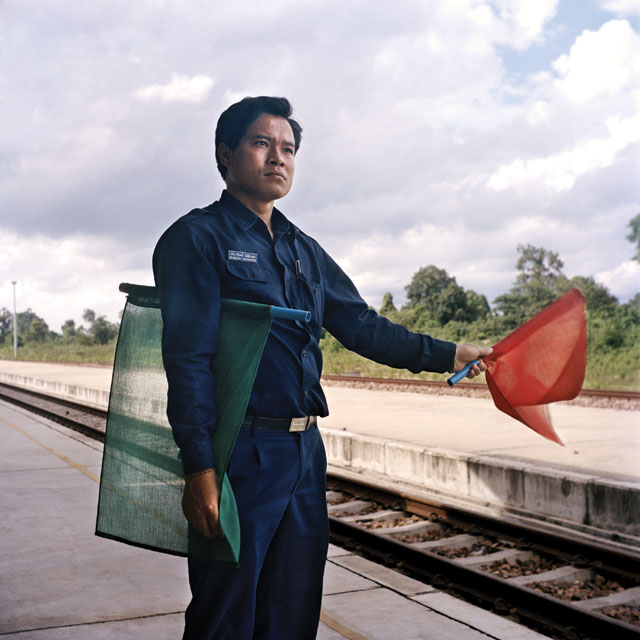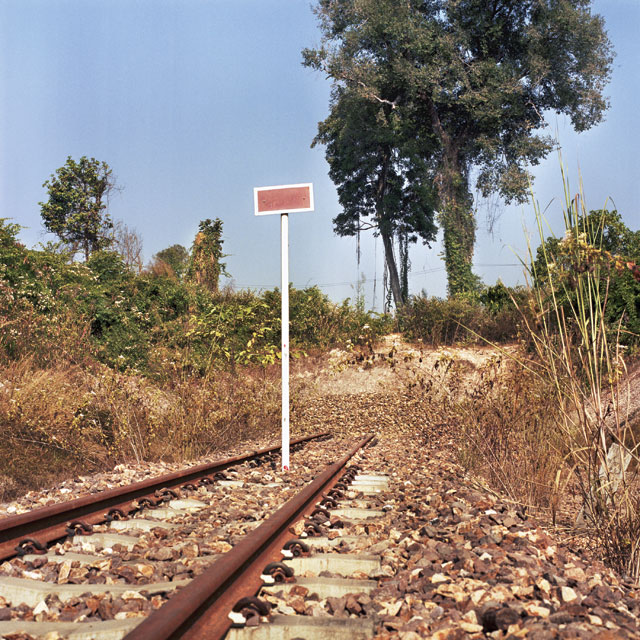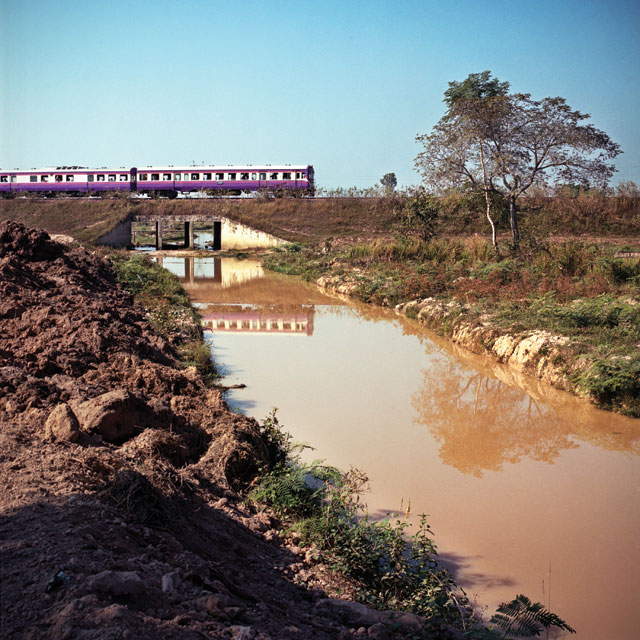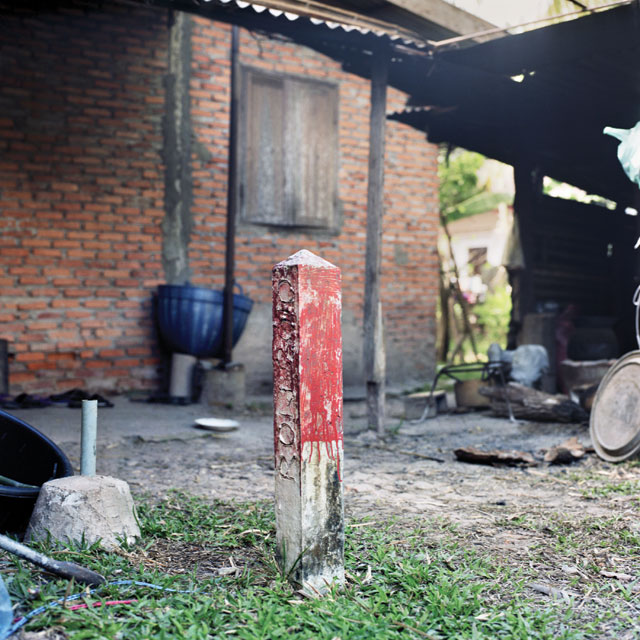The planned high-speed railway between Singapore and Kunming in China could be the catalyst for even greater Chinese influence in the region
By Jennifer Meszaros Photography by Ore Huiying
Situated at the junction of two biologically diverse eco-regions – the temperate north and the tropical south – a long chain of mountains cuts a striking vision against the horizon. The Laotians refer to the range as Phou Luang; for Westerners they are better known as the Annamites, and for more than 1100km, this vast and unique ecosystem straddles the Laos-Vietnam border. Home to an outstanding assemblage of habitats, animals and plant life, this remarkable range is soon to become the centre of a mammoth engineering feat.

“We follow the Chinese proverb: ‘If you want to be rich, build a road. If you want to be very rich, build a railroad.’ Until now we only have 3.5km [of railway track]. My minister always says that this 3.5km is like the Americans’ footstep on the moon. The first step, but it is a big step for mankind,” says Math Sounmala, director general of the planning and cooperation department at the Ministry for Public Works and Transport in Laos.
According to the Laos government, officials are moving ahead with a 420km high-speed railway that will connect the Laotian capital of Vientiane to Kunming, the capital of Yunnan province in southwestern China. An estimated 60% of the 76 tunnels and 154 bridges will be built on or through the geologically sensitive ranges of the Annamites and, depending on the needs of the railroad, up to 250 metres of land will be cleared on either side of the track. For the people who live along the railway’s proposed route, displacement is almost certain.
The Kunming-Vientiane line is part of a larger concept first introduced by the Asean-Mekong Basin Development Cooperation at the 5th Asean Summit in 1995. Dubbed the Singapore-Kunming rail line, a feasibility study was completed in 1999 that examined several potential routes. The idea was to develop a railway that would travel from Kunming through Laos, Thailand and Malaysia before ending in the regional trade hub of Singapore. Other branches of the line were proposed to weave through Vietnam, Cambodia and Myanmar.

Although the Asean secretariat stated the project was “a priority agenda in the Asean transport cooperation”, fiscal constraints and political factors have limited development. China – no stranger to high-speed rail (HSR) technology – is seeking to fast-track the process, with cooperation from Laos.
The development of an extensive rail network is of great strategic importance to China as it tries to expand its economic footprint. “With the eventual completion of a Kunming-Singapore HSR line, Kunming will be directly connected to all the major capitals of Southeast Asia, which will greatly facilitate the flow of people between China and the major Southeast Asian trade and finance centres. This line will form a transport backbone for mainland Southeast Asia, extending into the maritime realm and will further draw this region into the southern Chinese economy. It will accelerate the process by which Kunming will become the de facto capital of mainland Southeast Asia,” said Geoffrey Wade, a visiting fellow at the Crawford School of Public Policy, Australian National University.
As a member of the Greater Mekong subregion – a development project created by the Asian Development Bank (ADB) in 1992 that brought together Cambodia, Laos, Myanmar, Thailand, Vietnam and Yunnan province – China already exerts a considerable amount of economic clout in the region. Kunming is becoming a key economic player in a dynamic network of urbanised cites. The Laotian border provinces of Oudomxai and Luang Namtha have been greatly influenced by Yunnan’s strategic ambitions due to geographical proximity and shared cultural ties. An influx of Chinese commercial and infrastructure activity has notably reshaped the region’s economy, particularly over the last decade.

Wade warns that China’s influence has implications for Asean, particularly as member states move towards integration by 2015.
“This process of developing HSR across mainland Southeast Asia has only just begun, but the long-term effects aren’t difficult to assess… connectivity between mainland Southeast Asia and southern China is growing much faster than intra-Asean connectivity, and the strategic geography of East Asia is thereby being changed forever.
“Driven by high-speed rail networks, new roads and telecoms facilities centred on Kunming, together with China’s burgeoning economic engagement… mainland Southeast Asia is in the process of disconnecting from maritime Southeast Asia. This will, almost inevitably, result in Asean dividing along this fault line,” said Wade.
While the Kunming-Singapore line could reshape the regional order, China’s sights are not limited to Southeast Asia. According to Wade, there are already plans for HSR routes from Kunming into India and then through Pakistan to Tehran. A railway connecting Central Asia to Urumqi in western China is also being negotiated, which would facilitate even greater economic potential.
“China is one of the largest consumers of oil and natural gas in the world. With these resources becoming scarcer and their prices increasingly volatile, China needs to look at alternative sources for energy,” said Shreya Singh of the Institute of Peace and Conflict Studies, an independent think tank. “The transcontinental rail plan would not only give China access to major energy reserves and other resources, it would also strengthen China as a dominant player in Asia.”
China’s expansion does, however, rely heavily on neighbouring states getting on board with its ambitious goals – something Wade sees many Southeast Asian nations as all too eager to do.
“If you look at the history of China, whenever there is a very powerful Chinese state they’ve tended to expand their political and economic influence and incorporate areas around them,” he said. “Southeast Asia – especially mainland Southeast Asia – is particularly poor and particularly close, so that is one area in which expansion can take place at a fairly cheap rate; Central Asia likewise.”

In a bid to exert influence, China has notably ramped up diplomatic exchanges with neighbouring states while also pursuing interests further abroad. President Xi Jinping has visited more than 20 countries across the globe since formally taking up office in March 2013. Furthermore, China’s nascent HSR capacities are playing a part in its international relations, according to Wade.
“The speed at which China has mastered HSR technology is unparalleled,” he said. “Discussions about export of the technology are being held around the world and visiting dignitaries to China are being urged to use Chinese technology for their future HSR.”
Crucially, China’s brand of rail diplomacy seems to be working. Kenya, Bolivia, Hungary, Romania and Serbia have all recently struck rail deals with the nation.
While China’s rising influence is being felt across the globe, particularly in Southeast Asia, its partners’ true feelings remain mixed, according to David Shambaugh, a professor of political science and international affairs at the George Washington University.
“Even in China’s closest relationships… strong elements of distrust percolate beneath the surface of seemingly harmonious state-to-state relations,” he said. “The common denominator to most of China’s global activities and foreign policy is China’s own economic development, which leads to a mercantilist trade and investment posture.”
On some level, Chinese policy makers seem to recognise this. In his address to the Indonesian parliament last October, Jinping stressed that: “China is committed to a relationship of sincerity and friendship with Asean countries and to enhanced mutual political and strategic trust.”
Days later, at the 16th Asean-China Summit, Chinese Premier Li Keqiang emphasised the need for “deeper strategic mutual trust and good neighbourly relations”.
“China is the world’s most important rising power,” said Shambaugh. “It has an increasingly broad footprint across the globe, but it is not particularly deep.”
Keep reading:
“Mekong Mission: Impossible” – After last year’s fatal Lao Airlines crash, a hastily assembled local dive team was scrambled. Their story is a remarkable feat of human endurance and teamwork

